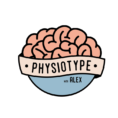
Ever taken a Big 5 personality test? It’s one of the most popular and scientifically validated personality models out there. It breaks down our personalities into five core dimensions: Openness to Experience, Conscientiousness, Extraversion, Agreeableness, and Neuroticism. But if you’ve been exploring the world of Physiotype, you might be wondering: How do these two systems relate to each other? Are they two completely different beasts, or are they looking at the same puzzle through different lenses?
Well, the truth is, it’s a bit of both.
Points of Intersection:
Physiotype and the Big 5 both aim to understand the core patterns that shape our personalities, our behaviors, and how we navigate the world. And there are some intriguing points of overlap:
- Prone/Supine & Agreeableness: Remember the Prone/Supine dichotomy—those action-oriented, independent folks versus the harmony-seeking, adaptable souls? Well, this maps beautifully onto the Big 5’s Agreeableness dimension. Prone individuals often score lower in Agreeableness, comfortable with asserting their own opinions and pursuing their goals even if it ruffles a few feathers. Supine individuals, naturally, tend to score higher, prioritizing cooperation and social harmony.
- Dynamic Features & Neuroticism: Physiotype looks at dynamic features like facial muscle activation and body language to glean insights into a person’s cognitive processes. These dynamic cues can also offer clues about a person’s level of Neuroticism—their tendency to experience negative emotions like anxiety, worry, and self-consciousness.
Where the Paths Diverge:
But while there are points of convergence, Physiotype and the Big 5 are ultimately distinct systems with different goals and approaches:
- Cognitive Functions vs. Trait Dimensions: The Big 5 focuses on describing broad personality traits, while Physiotype goes a layer deeper, aiming to understand the underlying cognitive functions that drive those traits. It’s like looking at the engine of a car rather than just observing how fast it goes.
- Physical Features vs. Self-Reported Data: The Big 5 relies primarily on self-reported data through questionnaires, while Physiotype adds a unique layer of observation, linking those internal cognitive processes to observable physical features. It’s like having an extra set of clues to solve the puzzle of personality.
- Predicting Behavior vs. Describing Tendencies: Both systems can offer insights into behavior, but they approach it from different angles. The Big 5 focuses on describing general tendencies and probabilities, while Physiotype, while acknowledging individual variation, suggests that a person’s innate cognitive wiring plays a significant role in shaping their actions and choices.
Two Valuable Lenses:
So, are Physiotype and the Big 5 competitors? Not at all. They’re more like complementary tools, each offering a valuable lens for understanding the intricacies of human personality. The Big 5 provides a broad overview, a framework for understanding general tendencies and patterns. Physiotype digs deeper, offering a more nuanced understanding of the cognitive mechanisms at play and suggesting a powerful link between our inner world and our outer appearance.
The journey of self-discovery is a multifaceted one. By exploring both Physiotype and the Big 5, we can gain a richer, more comprehensive understanding of ourselves and the people around us. It’s a reminder that the human personality is a vast and intricate landscape, full of fascinating discoveries waiting to be unearthed.
